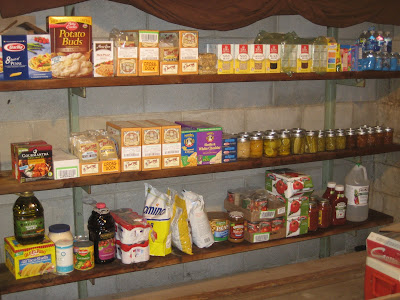
When we were kids, the area where we live would have fit pretty squarely into the category of rural. Twenty-some-odd years later, we're undeniably suburban. The population in our community (counting the eight nearest municipalities) went from 23,148 in 1980 to 45,771 today. Some of Chester County's biggest challenges these days are trying to plan for smart growth while preserving our agricultural heritage and open space.
So why do we choose to stay here? Well, for one, the Gardener's family has been in this end of the county since at least the early 1700s, and the house we bought was actually built by his uncle in the late 1960s. Most of the members of our family still live within a half-hour drive, and we like being able to stay close. Mostly, we feel like it's important to stay where we were raised and try to make a difference in the future of our community.
That being said, we recognize that trying to "homestead" in the suburbs comes with its share of challenges. For one, prices are high here. Another big one is the fact that it's basically impossible to live without at least one car. And perhaps the biggest one is the fact that we just don't fit in. We're sure our neighbors must wonder what the heck we're doing when we're plowing up big sections of our previously manicured lawn, hanging our undies out to dry, and picking dandelions. They're probably also worrying about what we're doing to their property values. Maybe one day they'll ask us for tips on starting their own vegetable gardens, but in the meantime we're always trying to maintain a level of orderliness that will keep the peace.
But there's a lot of good to be found here as well. I feel lucky that within about a 10 mile radius we have producers of local organic dairy and meat products, mushrooms, honey, flour and livestock feed, not to mention at least four CSAs, five farmers' markets, and three wineries! Within 50 miles we have the big city of Philadelphia, numerous universities, and great restaurants and breweries. We have access to culture and forward thinking, as well as hundred year old farms and small town community spirit.
The suburbs are constantly getting a bad rap as a comatose land of consumerism and conformity, but I don't think it has to be that way. I'd like to hear about some of your experiences in trying to live self-sufficiently on the outskirts, or tell us why you think "sustainability" and "suburbia" are simply irreconcilable!














































